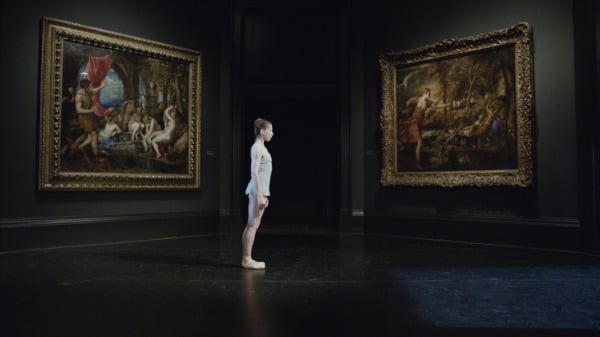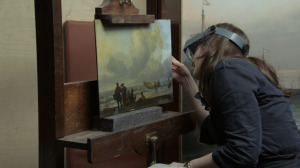
The opening images of Frederick Wiseman’s new documentary “National Gallery” pay quiet homage to the titular London location. They’re long, generous shots of the art museum’s sweeping spaces and silent tenants. As Wiseman moves from one high-ceilinged room to the next, stopping to fixate on some detail in an Old Master’s painting, there’s a distinct sensation of still-life, a moment frozen in time: portraiture.
“National Gallery” luxuriates over its still shots — it’s a movie of moments, with no identifiable hitch in plot or pacing. It’s minimal, as well, in the sense that Wiseman has done away with the pervasive talking head and didactic asides. He’s stripped the museum down to its bare bones: the artistic, intellectual and logistical conversations that inform the Gallery’s day-to-day operations. The gallery speaks for itself by way of public relations meetings, exhibit design consultations and guided docent tours. Wiseman moves fluidly from a marketing meeting (“We want the right type of publicity!”) to an unnamed (everyone’s anonymous, barring the artists themselves) docent’s explanation of a memento mori in a painting by Hans Holbein.

We, the audience, become acutely aware of the museum as a complex, multi-layered organism. The lighting fixtures in an exhibit and its priceless contents are given equal screen time; the mechanics of restoration are gone over again and again. We appreciate the artistry of Rembrandt and Velázquez even more when we understand the care that’s been taken to maintain the masters’ original brushstrokes in restoration.
Taken in whole, we’re granted a view of the museum’s public and private lives. “Paintings create an ideal world,” a docent explains to a rapt crowd. And, indeed, the gallery itself feels like an ivory tower of breathtaking dimensions. If Wiseman presents the museum as a kind of artistic utopia — all gleaming floors, hushed halls, and eager docents — the city outside the Gallery’s doors is an apt foil.
Case in point: midway through the film, a banner is hoisted across the National Gallery’s façade. “It’s no oil painting,” it proclaims as it unfurls. There’s a rare moment of uncertainty on the audience’s part — the film, however intellectually dense, is always baldly so — as we consider the implications of the signage. Advertisement for a new exhibit, possibly? We realize, after a beat, that we’re watching a Greenpeace protest in progress — an unsightly black slick decorates the word “oil” — and the Londoners in the street below alternately cheer and click their tongues in approval/disapproval. The external world intrudes, however briefly, on the idyll of an art museum.

Wiseman asks a good deal of his audience. In-depth information about the gallery’s artistic and logistical workings is free for the taking, should an audience member actively follow each thread of conversation, every tour guide’s spiel. For three hours, “National Gallery” proffers but does not press, shows but does not tell — it’s up to the audience to extract gems of information from the conversation Wiseman has captured on film. Like the paintings on the museum’s walls, “National Gallery” richly rewards the patient viewer with an eye to artistry.
“National Gallery” opens in San Francisco on December 19. It will air on PBS in early 2015.
Contact Madelyne Xiao at madelyne ‘at’ stanford.edu.
